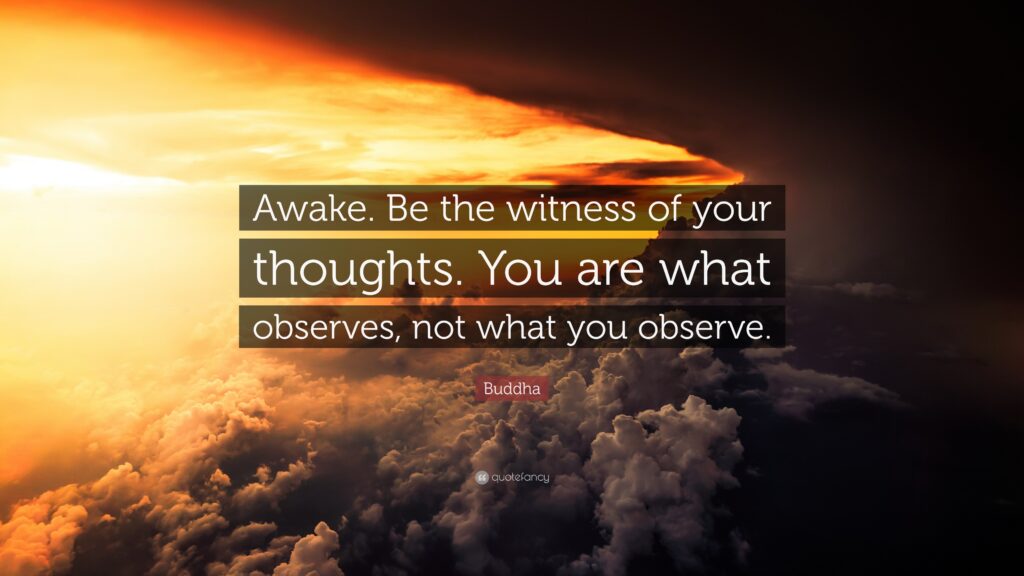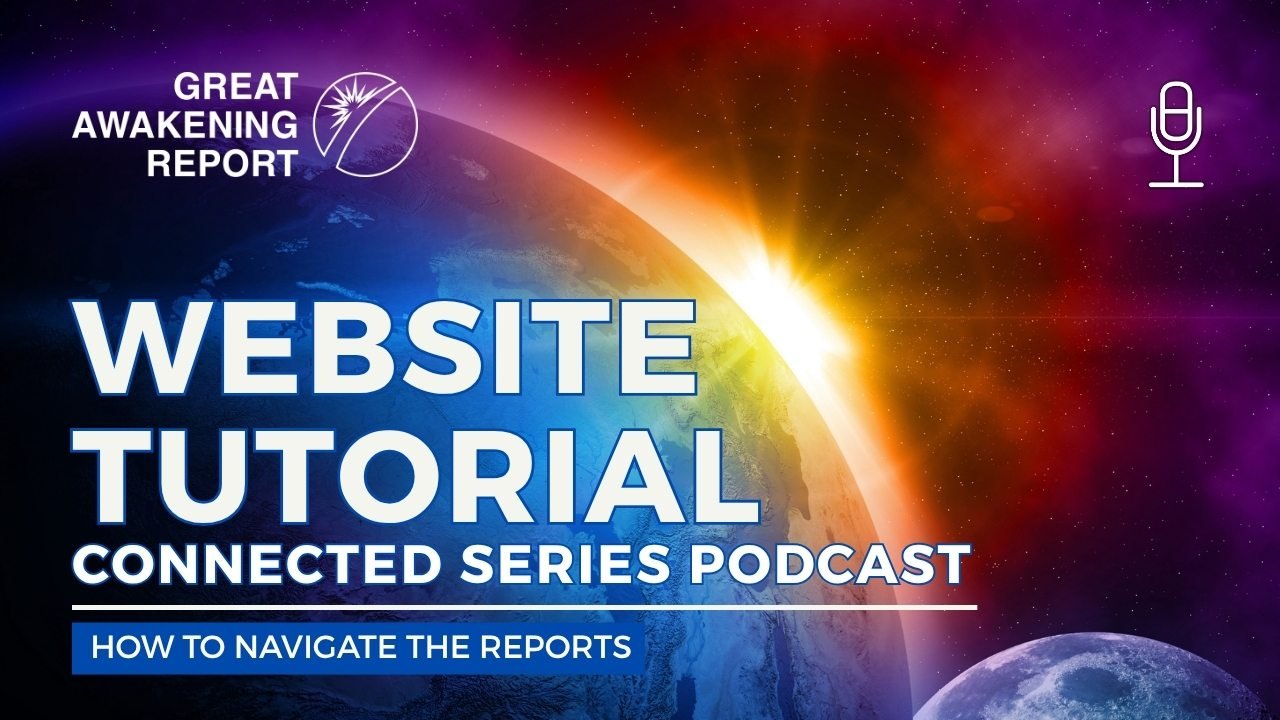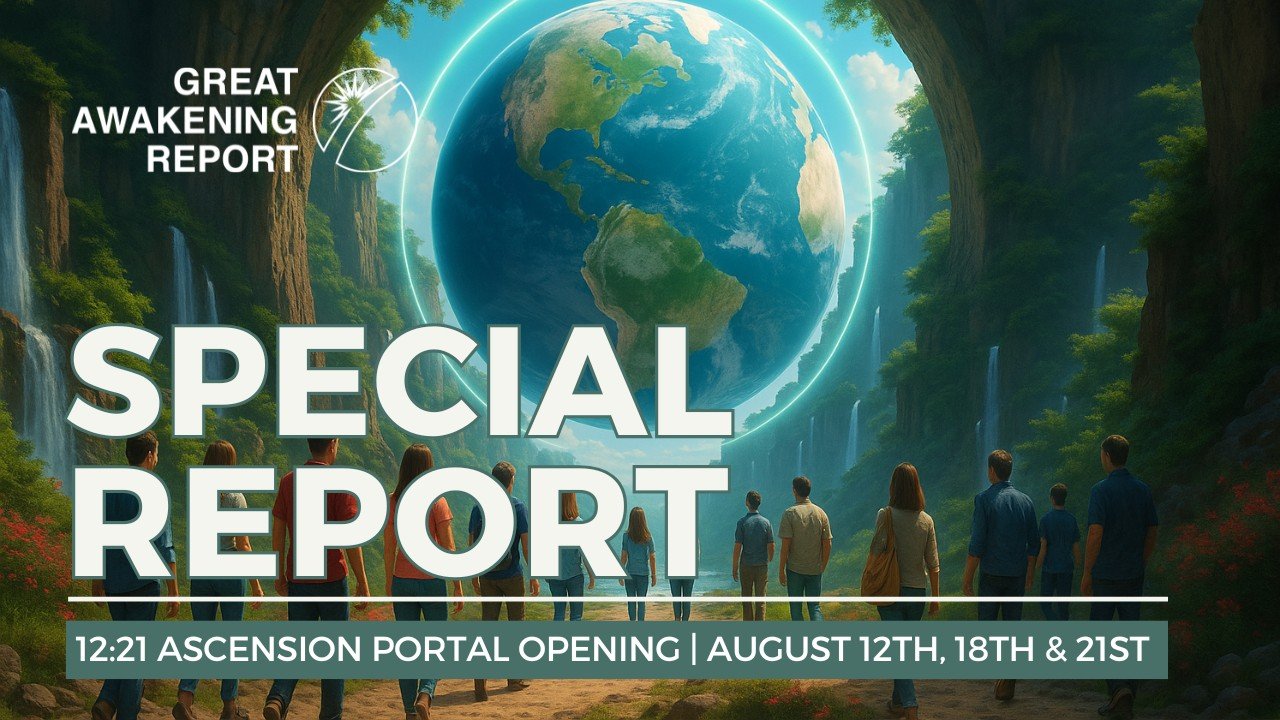Published Date: December 15th, 2023 | Updated, May 26th, 2024 💢
SPECIAL REPORT
TRUTH///AWAKENING///DISCLOSURE
THE OBSERVER’S CONSCIOUS PRACTICE, THE POWER OF NOW, THE KEY TO NAVIGATING YOUR PATH OF ASCENSION
Seeking the Path Inside vs. Outside
Consciousness / Discerning / Discriminating / Intuitive / Empathic / Perceptive / Vigilant
“As an observer, I embark on a journey through the intricate tapestry of existence, where the threads of the material world intertwine with the ethereal realms. In the dance of moments, I seek to decipher the whispers of the universe, unveiling the sacred narratives that lie beneath the surface of ordinary encounters. With an open heart and a mindful gaze, I navigate the subtle currents of spirituality, inviting the unseen to reveal its wisdom and illuminate the path of contemplation.”
Report Topic Headings; Observer Quotes, Observer Defined, The Observer Senses, What Do We Call An Observer, Observing Polarity In Thoughts, Word and Actions, Observing Your Mental Atmosphere, Starts With the Journey Into The Heart, Observer’s Path Inward, Navigation the Heart, Self Observer Practice, Inner Observer, Observing the Observer, Power of Now, Being Present & In the Moment, The Art of Beingness, The Observer’s Response vs Reaction, Finding Your 5D Tribe, The Observant Leader, Life of The Observer, Overcoming the Observer Effect, Is Quantum Physics Spiritual, Wave Theory

The ‘Observer’s Spiritual Practice’ Special Report Constitutes One of Our Three Core Principles adeptly steering you through the rationale, purpose, and rewards of embracing Spiritual Awakening. Initiating The ‘Observer Spiritual Practice’ entails directing our conscious awareness into the depths of the heart. Actively participating in the observation of negative thoughts and emotions serves as a catalyst for discovering our spiritual path, fostering growth, and propelling individuals on their journey toward ultimate ascension.

“In the sacred triad of life’s essence, we embrace the core principles: as ‘The Observer,’ we stand vigilant, witnessing the ebb and flow of existence without attachment. Through ‘The Forgiveness and Releasing Practice,’ we liberate ourselves from the chains of resentment, fostering a spirit unburdened. Finally, with ‘The Heart of a Spiritual Volunteer,’ we become catalysts of compassion, weaving threads of love into the fabric of the world, for in service lies the true embodiment of our spiritual journey.”
The Conscious Awakening 3 Core Principals
Welcome to the Great Awakening Report (GAR), where our mission is grounded in three transformative core principles that illuminate the path toward personal and collective evolution. In the sacred practice of “The Observer’s Conscious Practice,” we invite you to embark on a journey of profound self-awareness, transcending the ordinary to explore the depths of your consciousness. Within the realm of “Forgiveness & Releasing Spiritual Practice,” we offer the key to unlock the chains of the past, allowing the light of forgiveness to illuminate the way forward. Finally, our commitment to “The Heart of a Conscious Volunteer” pulses at the core of our being, inspiring acts of selfless service that resonate with the universal energy of compassion. As we navigate the realms of mindfulness, forgiveness, and service, the Great Awakening Report serves as a guiding light, inviting you to join us in a collective awakening that transcends the boundaries of the self.
Observer’s Conscious Practice
An Observer’s spiritual practice involves the intentional cultivation of mindfulness and self-awareness with a focus on the spiritual dimensions of one’s existence. Rooted in various contemplative traditions, this practice goes beyond mere observation of thoughts, emotions, and actions; it includes a meta-awareness that reflects on the nature of the observer itself. This spiritual endeavor incorporates elements of detachment, reflexivity, and exploration of one’s deeper consciousness. It seeks to foster not only an understanding of the present moment but also an awareness of the spiritual essence within, encouraging individuals to connect with a higher self or universal consciousness. By integrating mindfulness with spiritual inquiry, observer’s spiritual practice aims to bring about a transformative shift in perspective, inviting a deeper connection to the sacred, and promoting a more harmonious and purposeful way of living.
Forgiveness & Releasing Conscious Practice
Forgiveness and releasing as a spiritual practice involve the intentional cultivation of compassion, letting go of resentments, and freeing oneself from the emotional burdens of past grievances. Rooted in various spiritual traditions, this practice recognizes that holding onto anger and grudges can hinder spiritual growth and well-being. It entails a conscious decision to release negative emotions, allowing space for healing and transformative change. By acknowledging the impermanence of human experiences and understanding that forgiveness is a gift to oneself, this spiritual practice promotes inner peace, compassion for others, and a deeper connection to the universal flow of love and understanding. Ultimately, forgiveness and releasing serve as powerful tools for personal liberation and spiritual evolution, fostering a sense of lightness and openness to the present moment.
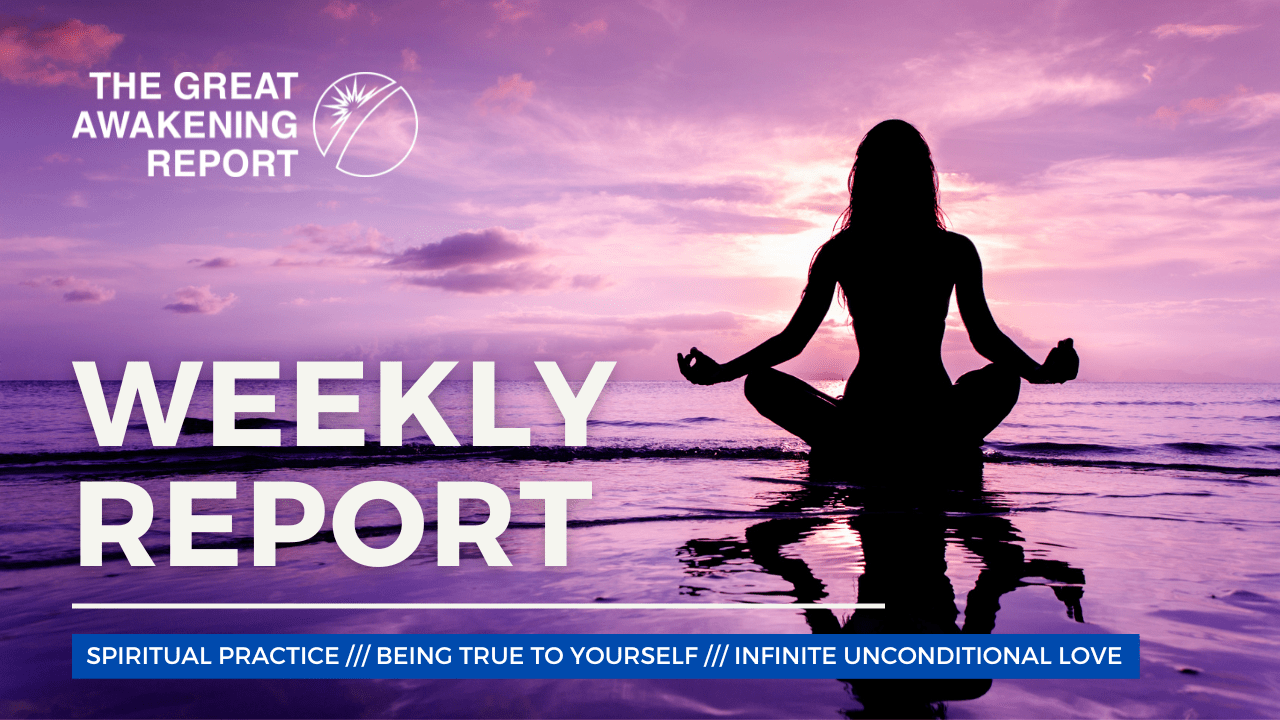
The Heart of A Conscious Volunteer
The heart of a conscious volunteer beats with a deep sense of compassion, service, and a profound connection to a higher purpose. Engaged in acts of selfless service, a conscious volunteer is driven by the understanding that true fulfillment comes from contributing to the well-being of others. This volunteer carries a genuine desire to alleviate suffering, promote kindness, and embody the principles of love and unity. Rooted in spiritual values, the heart of a spiritual volunteer seeks to make a positive impact on the world, recognizing the interconnectedness of all beings. It beats with the rhythm of empathy, generosity, and a commitment to creating a more compassionate and harmonious global community.


“In service to others, a conscious volunteer finds purpose and joy, lighting the path for those in need.”
Conscious Observer Quotes
In the tapestry of conscious exploration, the concept of the Conscious Observer unveils a profound dimension of awareness—a vantage point from which individuals can transcend the ceaseless currents of thoughts and emotions to witness them with serene detachment. This ethereal observer, often associated with the conscious essence within, remains untouched by the fluctuations of the mind, embodying a quiet yet potent force that facilitates deeper self-awareness and connection to higher consciousness. As we delve into the wisdom of the ages, let these quotes illuminate the path of the Conscious Observer, offering insights into the transformative power of mindfulness, the liberating embrace of non-judgmental awareness, and the profound harmony found in the silent presence within.
The Conscious Observer; here are some quotes that focus on the concept of the spiritual observer:
- “The conscious observer is the one who watches the mind without being entangled in its drama.” – Deepak Chopra
- “Be a witness, not a judge. Focus on yourself, not on others. Listen to your heart, not to the crowd.” – Unknown
- “The conscious journey is the unlearning of fear and the acceptance of love.” – Marianne Williamson
- “To be a witness to ourselves is to be aware of our thoughts, feelings, and actions from a higher perspective.” – Eckhart Tolle
- “The quieter you become, the more you can hear.” – Ram Dass
- “Become aware of your thoughts, so you can become the master of your mind, rather than mastered by it.” – Dan Brule
- “In the stillness of the mind, you can hear the whisper of the heart.” – Ralph Waldo Emerson
- “The conscious journey is individual, highly personal. It can’t be organized or regulated. It isn’t true that everyone should follow one path. Listen to your own truth.” – Ram Dass
- “Your task is not to seek for love, but merely to seek and find all the barriers within yourself that you have built against it.” – Rumi
- “The conscious observer within you is the silent presence that witnesses the ebb and flow of life without getting entangled in its currents.” – Deepak Chopra
These quotes center around the idea of spiritual awareness, mindfulness, and the journey of self-discovery on a deeper, spiritual level.
“Be the silent watcher of your thoughts and behavior. You are beneath the thinker. You are the stillness beneath the mental noise. You are the love and joy beneath the pain.” – Eckhart Tolle
The Conscious Observer Defined & Explained
The concept of the conscious observer denotes a heightened state of awareness where individuals can detach themselves from the ceaseless flow of thoughts, emotions, and experiences, allowing them to view these aspects from a more elevated or profound perspective. This observer is closely tied to the conscious dimension of one’s being, serving as a witness or watcher that remains untouched by the undulations of the mind.
Key elements associated with the conscious observer include a sense of detachment from the ego, fostering greater self-awareness; mindfulness practices, encouraging a non-judgmental awareness of thoughts and feelings; a connection to higher consciousness that transcends ordinary awareness; and a non-judgmental stance that promotes inner peace.
Additionally, the conscious observer is seen as a link to the divine in various spiritual traditions, providing individuals with the ability to break free from the identification with roles and emotions, thereby offering a profound understanding of life. This silent, witnessing presence within is not entangled in the mental chatter but stands as a serene observer to the ebb and flow of thoughts and experiences. Developing the capacity to be a conscious observer often involves engaging in practices such as meditation, mindfulness, and self-inquiry, empowering individuals to deepen their connection to their spiritual essence and navigate life with heightened wisdom, compassion, and inner peace.
What is the Conscious Meaning of Observer?
The Observer—the witness, our soul, our higher self — helps us to see things objectively, as they really are. It’s a stance of both wisdom and compassion. It allows us to step off the worrisome ego stage of our lives and look back and review things from afar.
The conscious meaning of being an observer can vary depending on different belief systems and philosophies. In some spiritual traditions, being an observer is seen as a way to cultivate mindfulness and detachment from the ego. It involves observing one’s thoughts, emotions, and experiences without judgment or attachment, allowing for a deeper understanding of oneself and the world. It can also be seen as a way to connect with the present moment and the divine, as it allows for a heightened sense of awareness and connection to the larger universe.


What Does It Mean To Become The Observer?
Describes an Observer as someone who can remove themselves from a situation to better “understand”. In this mode, a person can distance him or herself and better analyze the situation. He or she evaluates, rather than being immersed in the feelings that are present in the current scenario.
To become the observer means to step back from your thoughts, emotions, and experiences and simply observe them without judgment or attachment. It is a state of detached awareness where you are able to observe your thoughts and emotions as they arise, without getting caught up in them. By becoming the observer, you can gain insight into your own patterns of thinking and behavior, and develop a greater sense of self-awareness and clarity.


What is the Power of Being an Observer?
Improving your observation skills allows you to “listen” with more than just your ears and make better decisions. It brings a calmness to you, as you are no longer centered within yourself, but are selflessly involved in another person’s world.
The Power of Being an Observer refers to the ability to observe and understand the world around us without actively participating or getting emotionally involved. It allows us to gain valuable insights, make better decisions, and have a broader perspective on various situations. By being an observer, we can detach ourselves from biases and judgments, enabling us to see things more objectively. This power can be particularly useful in fields such as science, research, and even personal growth. Is there anything specific you would like to know about the Power of Being an Observer?



“To be an observer is to be a student of life.” – Bryant McGill
The Observer Senses
THE 7 OBSERVER SENSES: 1. TOUCH, 2. SMELL, 3. SIGHT, 4. HEARING, 5. TASTE, 6. INTUITION, 7. FEELINGS
What is the Word for the Ability to be Observant? Synonyms of observant (adj. alert, watchful) Attentive, Discerning, Discriminating, Intelligent, Mindful, Perceptive, Vigilant, Advertent.
Is becoming aware of your mental thought atmosphere by tracking your emotions, most notably your negative thoughts attached to said negative emotions. Once you’ve identified the negative emotions tied to a negative thought then you can backtrack that thought to its origin. This could include a past traumatic event or dramatic experience tied to fear. Most all negative experiences include another human being or a primary family member. The more you practice being the observer of your thoughts, the more you can set your intention to release these negative experiences.
What Do You Call a Person Who Observes?
Definitions of observer – a person who becomes aware (of things or events) through the senses. Synonyms: beholder, perceiver, percipient.
A person who observes is often referred to as an observer or a spectator. Observers are individuals who watch or witness events, situations, or phenomena without actively participating in them. They may observe for various reasons, such as gathering information, studying behavior, or simply enjoying the experience.
Is Being an Observer a Positive Thing?
Observation is the process of focusing on something or someone to gather information for critical evaluation. It is more than just passively seeing, and it can involve all of your senses. Good observation helps you to become informed and to be more effective at work.
Being an observer can have both positive and negative aspects. On the positive side, it allows for self-awareness, introspection, and the ability to reflect on experiences. It can lead to a better understanding of oneself and others. However, constantly being in an observational mode might make it challenging to fully engage in the present moment or connect deeply with experiences. Like everything, it’s about finding a balance that works for you. What are your thoughts on being an observer?

“In the Midst of Movement and Chaos, Keep Stillness Inside of You.” – Deepak Chopra
Observing Polarity in Thoughts, Words & Actions
Observing polarity in one’s thoughts, words, and actions involves becoming aware of the dualistic nature of these aspects and seeking to maintain balance and alignment. Polarity refers to the existence of opposites, such as positive and negative, light and dark, or constructive and destructive forces. Here’s a breakdown of observing polarity in these different facets:
1) Thoughts:
-
- Awareness: Recognizing the presence of both positive and negative thoughts within one’s mind.
- Observation: Actively observing the ebb and flow of thoughts without attachment or judgment.
- Balancing: Striving to cultivate a balance between constructive and optimistic thoughts while acknowledging and understanding the existence of challenging or pessimistic ones.
2) Words:
-
- Conscious Expression: Being mindful of the words chosen for communication.
- Alignment: Ensuring that spoken words align with one’s values and intentions.
- Harmony: Striving to express oneself authentically while minimizing the potential for harm or negativity in language.
3) Actions:
-
- Intention: Reflecting on the motivations behind actions and decisions.
- Alignment with Values: Ensuring that actions are in harmony with personal values and principles.
- Conscious Choices: Making deliberate choices that contribute positively to personal growth and the well-being of others.
4) Integration
-
- Holistic Awareness: Recognizing that thoughts, words, and actions are interconnected aspects of one’s being.
- Mind-Body Connection: Understanding the impact of thoughts on words and actions, and vice versa.
- Alignment with Higher Values: Striving for coherence and alignment with overarching values, fostering a holistic and integrated approach.
5) Self-Reflection:
-
- Regular Assessment: Engaging in self-reflection to regularly assess the congruence between thoughts, words, and actions.
- Adaptation: Adjusting behavior when inconsistencies or imbalances are identified.
- Personal Growth: Viewing the observation of polarity as an opportunity for personal growth and development.
Observing polarity in one’s thoughts, words, and actions is a continuous process of self-awareness and self-regulation. It involves a commitment to mindful living, where individuals strive to maintain balance, authenticity, and positive impact in their inner and outer expressions.
Observing Your Mental Atmosphere
Observing your mental atmosphere and attitude involves consciously paying attention to the overall climate of your thoughts and the orientation of your mindset. It’s a practice rooted in self-awareness, where you become the observer of your own cognitive and emotional landscape. Here’s how you can describe and engage in this practice:
1) Mental Atmosphere:
-
- Awareness: Begin by tuning into the prevailing mood or “atmosphere” of your thoughts. Notice if it feels calm, chaotic, positive, negative, or neutral.
- Quality of Thoughts: Observe the nature of your thoughts. Are they predominantly optimistic or pessimistic? Are they focused on the past, present, or future?
- Environmental Influence: Consider how external factors, such as current circumstances or interactions, may be influencing the overall mental atmosphere.
2) Attitude:
-
- Mindset Observation: Reflect on your general attitude or mindset. Is it growth-oriented, fixed, optimistic, pessimistic, or a mix of these?
- Response Patterns: Notice how you typically respond to challenges or successes. Are you inclined to see opportunities or obstacles?
- Cultivation: If necessary, consider how you might intentionally cultivate a more positive and constructive attitude.
3) Emotional Awareness:
-
- Emotional Tone: Assess the emotional tone underlying your thoughts. Are you feeling predominantly positive emotions like joy and gratitude, or are negative emotions such as anxiety and frustration more prevalent?
- Response to Emotions: Observe how you respond to various emotions. Are you able to navigate them with mindfulness and resilience, or do they tend to dictate your mental atmosphere?
4) Self-Reflection:
-
- Regular Check-Ins: Engage in regular self-reflection to check the pulse of your mental atmosphere and attitude.
- Identify Patterns: Identify recurring thought patterns or attitudes that may impact your overall well-being.
- Adaptation: Consider how you might adapt your mental atmosphere and attitude to align more closely with your goals and values.
5) Intentional Shifts:
-
- Mindful Intervention: If you notice a negative or unproductive mental atmosphere, intervene mindfully. Engage in practices like positive affirmations, gratitude exercises, or mindfulness meditation to shift your mental state.
- Choose Positivity: Make a conscious choice to approach challenges with a positive and solutions-oriented mindset.
Observing your mental atmosphere and attitude is an ongoing practice that empowers you to take an active role in shaping your cognitive and emotional experiences. It’s a journey of self-discovery and intentional cultivation of a mental climate that contributes positively to your overall well-being.

What Skills Do Good Observers Have?
Observation skills are dependent on several other abilities and attributes, such as: Communication, emotional intelligence, critical thinking, attention to detail, look for details, avoid distractions, keep an observation journal, quantify things as you notice them.
Good observers often possess keen attention to detail, patience, and the ability to be present in the moment. They notice subtle cues, patterns, and changes in their surroundings. Empathy is another valuable skill—they can pick up on others’ emotions and perspectives. Effective communication is often tied to observational skills, as it requires accurately interpreting and conveying information. Curiosity is the driving force behind observation, motivating individuals to explore and understand the world around them. What do you think makes a good observer?

Beautiful fractal of a big red dynamic heart
“Don’t be pushed around by the fears in your mind. Be led by the dreams in your heart.” – Roy T. Bennett
It All Starts With the Journey Into The Heart
The observer practice, begins by moving one’s consciousness into the heart, is a mindfulness technique that involves intentionally shifting one’s awareness from the mind to the heart center. This practice draws from spiritual and contemplative traditions, emphasizing the significance of the heart as a center of consciousness and wisdom. By directing attention to the heart, individuals seek to cultivate a state of deep awareness and presence.
Moving consciousness into the heart involves focusing attention on the physical area around the heart, often visualized as the center of the chest. This shift aims to transcend the analytical and sometimes reactive nature of the mind, allowing individuals to connect with a more intuitive, compassionate, and centered aspect of themselves.
In this practice, the heart is considered a source of profound wisdom and a gateway to a deeper understanding of oneself and others. By anchoring consciousness in the heart, individuals may experience a sense of calm, empathy, and clarity. It provides a space for observing thoughts and emotions with a greater degree of detachment, fostering a mindful and non-judgmental awareness of the present moment.
Ultimately, moving one’s consciousness into the heart as part of the observer practice serves as a foundation for cultivating a more centered and mindful approach to life, enabling individuals to respond to situations with greater wisdom, compassion, and authenticity.

“The heart’s journey is not just a destination but a continuous exploration—a sacred sojourn where we discover that the path within is as infinite and boundless”
The Observer’s Path Inward, Navigating the Heart
“The Observer’s Path Inward, Navigating the Heart” is a concept that revolves around a journey of self-discovery and mindfulness, emphasizing the role of the observer in navigating one’s inner world, particularly through the metaphorical landscape of the heart. Here’s a breakdown of this concept:
- The Observer’s Path Inward:
-
- Self-Reflection: The observer represents an aspect of oneself that engages in self-reflection and introspection. It’s the part of you that steps back from the constant stream of thoughts and experiences to observe and understand the inner workings of your mind and emotions.
- Non-Judgmental Awareness: The observer practices non-judgmental awareness, allowing thoughts and feelings to arise without immediate attachment or reaction. This approach fosters a deeper understanding of the self without being overly critical.
2) Navigating the Heart:
-
- Metaphorical Landscape: The heart is often used metaphorically to represent the seat of emotions, compassion, and authentic self-expression. Navigating the heart involves exploring and understanding these emotional landscapes within oneself.
- Emotional Intelligence: The observer navigates the heart with emotional intelligence, recognizing and acknowledging various emotions, both positive and challenging, without being overwhelmed by them.
- Connection to Authenticity: The heart is also associated with authenticity. Navigating the heart means connecting with one’s true self, understanding personal values, and aligning actions with the core of one’s being.
3) Integration of Mind and Heart:
-
- Holistic Awareness: The observers path inward emphasizes the integration of the mind and heart. It encourages a holistic awareness that goes beyond intellectual understanding, embracing the emotional and intuitive aspects of one’s inner world.
- Balancing Rationality and Emotion: By navigating the heart, individuals strive to balance rationality with emotion, allowing both to coexist harmoniously. This integration contributes to a more authentic and well-rounded experience of self.
4) Cultivating Compassion:
-
- Towards Self and Others: The observer, navigating the heart, fosters a sense of compassion both towards oneself and others. It involves understanding one’s own struggles and those of others with empathy and kindness.
- Non-Attachment: Compassion also involves non-attachment, recognizing that emotions and experiences are transient and allowing them to flow without undue clinging.
5) Mindful Living:
-
- Present Moment Awareness: The observers path inward encourages living mindfully in the present moment. By navigating the heart with mindfulness, individuals can fully engage in their experiences without being overly influenced by past regrets or future anxieties.
In summary, the concept of “The Observer’s Path Inward, Navigating the Heart” encapsulates a journey of self-awareness, emotional intelligence, and authenticity. It’s about cultivating a mindful and compassionate approach to navigating the complexities of one’s inner world, with a particular focus on the metaphorical landscape of the heart
The Self Observation Practice
“The Self-Observation Practice” is a mindfulness technique centered on keenly observing one’s thoughts, emotions, and behaviors without immediate judgment or reaction. This practice involves cultivating a conscious awareness of the inner workings of the mind and emotions, fostering self-understanding and personal growth. Here are key elements of the self-observation practice:
1) Mindful Awareness:
-
- Present Moment Focus: The practice encourages individuals to be fully present in the moment, paying attention to their thoughts, feelings, and sensations as they unfold in real-time.
- Non-Judgmental Observation: Practitioners aim to observe their internal experiences without attaching immediate judgments or evaluations. This non-judgmental stance fosters a sense of curiosity and openness.
2) Thought Monitoring:
-
- Thought Awareness: The focus is on becoming aware of the stream of thoughts passing through the mind. This includes both positive and negative thoughts.
- Identification of Patterns: Through self-observation, individuals can identify recurring thought patterns, enabling them to gain insights into their cognitive tendencies.
3) Emotional Awareness:
-
- Recognizing Emotions: The practice involves acknowledging and recognizing the full spectrum of emotions, from joy and contentment to discomfort and frustration.
- Understanding Triggers: By observing emotional responses, individuals can identify the triggers that elicit specific emotional reactions.
4) Behavioral Observation:
-
- Actions and Reactions: Practitioners pay attention to their actions and reactions in various situations. This includes observing both verbal and non-verbal behaviors.
- Impact on Others: Individuals may also note how their behavior influences or affects others, fostering a greater awareness of interpersonal dynamics.
5) Reflection and Insight:
-
- Journaling: Keeping a journal may be part of the self-observation practice, allowing individuals to document their observations and reflect on patterns over time.
- Insight Generation: Regular self-observation can lead to valuable insights into personal habits, triggers, and areas for potential growth and development.
6) Non-Identification:
-
- Detachment from Ego: Practitioners strive to detach from a strong identification with their thoughts and emotions. This detachment promotes a sense of inner freedom and the ability to respond thoughtfully rather than react impulsively.
7) Intentional Response:
-
- Pause and Reflect: The practice encourages individuals to introduce a brief pause between stimulus and response, allowing time for conscious reflection before reacting.
- Intentional Action: With self-observation, individuals can cultivate the ability to respond to situations with intention, aligning their actions with their values and goals.
8) Continuous Practice:
-
- Consistency: The self-observation practice is most effective when undertaken consistently over time. Regular observation builds a deeper understanding of oneself and supports ongoing personal development.
In essence, the self-observation practice is a dynamic and introspective process that empowers individuals to cultivate mindfulness, gain insights into their inner world, and navigate life with greater self-awareness and intentionality.

“Learn to be an observer of your thoughts rather than a slave to them.” – Pema Chödrön
Inner Observer, A Witness To Our Thought, Words and Actions
The Inner Observer refers to a facet of consciousness that serves as a witness or observer to one’s own thoughts, words, and actions. It is a concept rooted in mindfulness and self-awareness practices, emphasizing the ability to step back from the stream of consciousness and observe oneself with a sense of detachment. The Inner Observer is characterized by the following aspects:
1) Witnessing Thoughts:
-
- The Inner Observer allows individuals to observe their thoughts as they arise. This involves paying attention to the content, quality, and patterns of thought without immediate identification or judgment.
2) Observing Words:
-
- It involves witnessing the words one speaks, both internally (self-talk) and externally (communication with others). The Inner Observer notices the language used, tone, and the impact of words on oneself and others.
3) Watching Actions:
-
- The Inner Observer extends to the realm of behavior, enabling individuals to observe their actions without being solely immersed in them. This includes both conscious and automatic behaviors.
4) Non-Judgmental Awareness:
-
- A key characteristic of the Inner Observer is its non-judgmental stance. Instead of immediately evaluating thoughts, words, or actions as good or bad, the Inner Observer maintains a neutral and curious awareness.
5) Detachment from Ego:
-
- The Inner Observer allows for a certain level of detachment from the ego or the sense of self. It provides a perspective that transcends personal identification, fostering a broader and more objective view of one’s experiences.
6) Mindful Presence:
-
- Operating from a state of mindful presence, the Inner Observer enables individuals to be fully present in the moment. This presence facilitates a deeper understanding of oneself and the dynamics of the inner world.
7) Conscious Reflection:
-
- The Inner Observer supports conscious reflection by creating a mental space for individuals to pause and consider their thoughts, words, and actions before reacting impulsively.
8) Facilitating Change:
-
- By observing without attachment, the Inner Observer becomes a catalyst for personal growth and change. It provides the opportunity to consciously choose responses and behaviors aligned with one’s values and intentions.
9) Integration of Awareness:
-
- The Inner Observer integrates awareness into daily life, allowing individuals to bring a sense of mindfulness into various situations. This integration supports a more conscious and intentional way of living.
Cultivating the Inner Observer is a foundational aspect of many contemplative and spiritual practices. It empowers individuals to become active participants in their own self-awareness, fostering a greater sense of agency and the ability to navigate life with clarity and purpose.
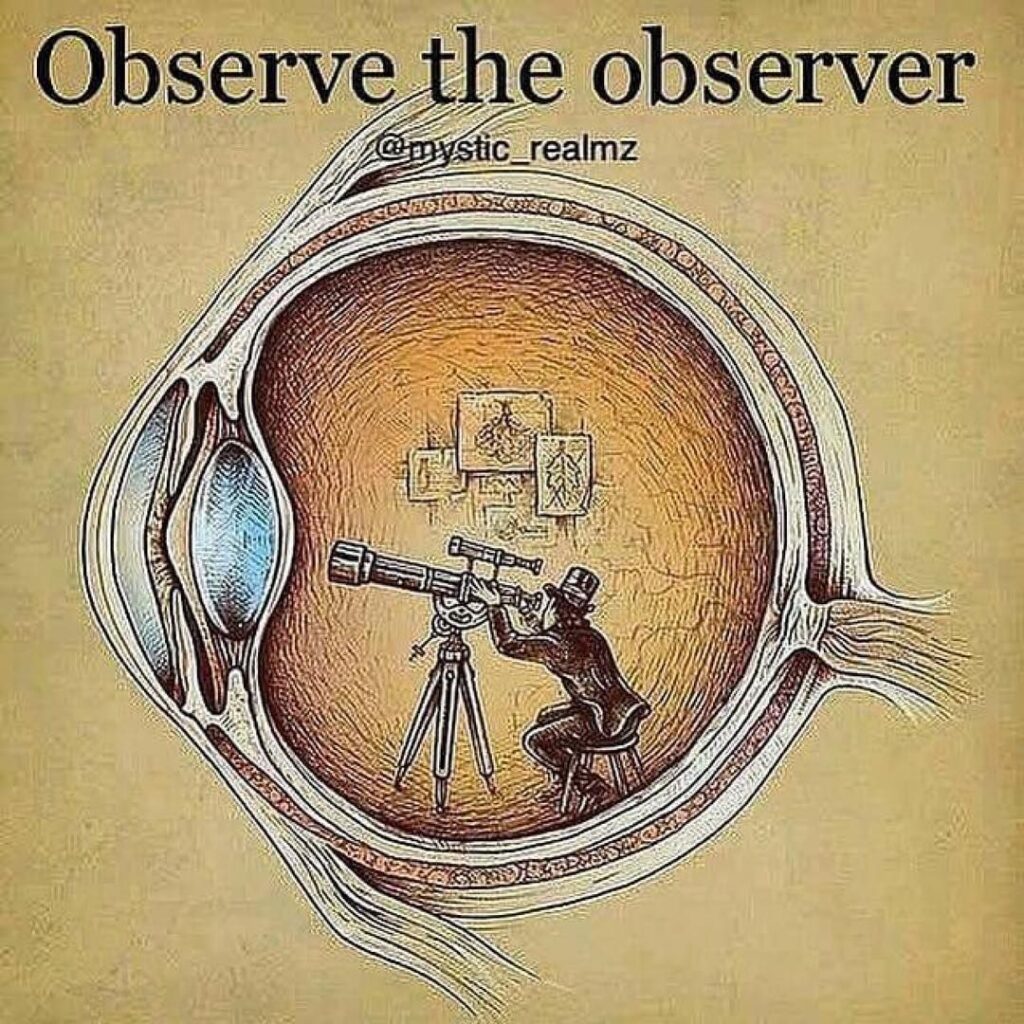
“The act of observing oneself is a voyage into the heart of authenticity. The observer, like a gentle guide, unveils the layers of identity, leading us to the core of our truest selves.”
Observing the Observer
“Observing the Observer” is a concept rooted in self-awareness and mindfulness, involving a meta-awareness or reflection on the very act of observing. It goes a step beyond being aware of thoughts, words, and actions to include an awareness of the observer itself. Here’s a breakdown of this concept:
1) Meta-awareness:
-
- Observing the observer involves a meta-awareness, where one not only notices thoughts, emotions, and behaviors but also turns attention inward to observe the process of observation itself.
- It’s akin to taking a step back and becoming conscious of the part of you that is doing the observing.
2) Reflexivity:
-
- Reflexivity is a key component, as individuals reflect on their own act of observing. This self-reflective stance adds another layer of consciousness to the inner dialogue.
- This reflexivity can lead to a deeper understanding of one’s own cognitive and perceptual processes.
3) Detachment from Identification:
-
- Observing the observer promotes a certain level of detachment from identification with thoughts and feelings. It encourages individuals to recognize that the observer is distinct from the observed.
- This detachment fosters a sense of inner freedom and flexibility in responding to various situations.
4) Exploration of Perspective:
-
- Individuals explore the perspective from which the observer operates. This involves questioning assumptions, biases, and filters through which one interprets experiences.
- It allows for a more open and flexible approach to understanding one’s own perceptions.
5) Understanding the Filters:
-
- Observing the observer entails an exploration of the filters or lenses through which one views the world. These filters are shaped by past experiences, beliefs, and cultural conditioning.
- Understanding these filters can lead to a more nuanced and conscious interpretation of reality.
6) Mindful Inquiry:
-
- Engaging in mindful inquiry, individuals question the nature of the observer. They might ask: What is the quality of my observation? What biases or preconceptions am I bringing to this observation? Am I truly open to what is being observed?
7) Integration with Mindfulness Practices:
-
- The concept is often integrated into mindfulness practices, where individuals learn to observe not only external stimuli but also the internal process of observation.
- This integration enhances the depth and richness of the mindfulness experience.
8) Cultivating Presence:
-
- Observing the observer contributes to the cultivation of presence. It emphasizes being fully present not just in the external environment but also in the internal dynamics of observation.
- This presence supports a more conscious and intentional way of living.
In essence, observing the observer adds a layer of self-awareness that can lead to a profound shift in perception and behavior. It invites individuals to explore the nature of their own consciousness, fostering a greater sense of clarity, authenticity, and mindfulness in their daily lives.
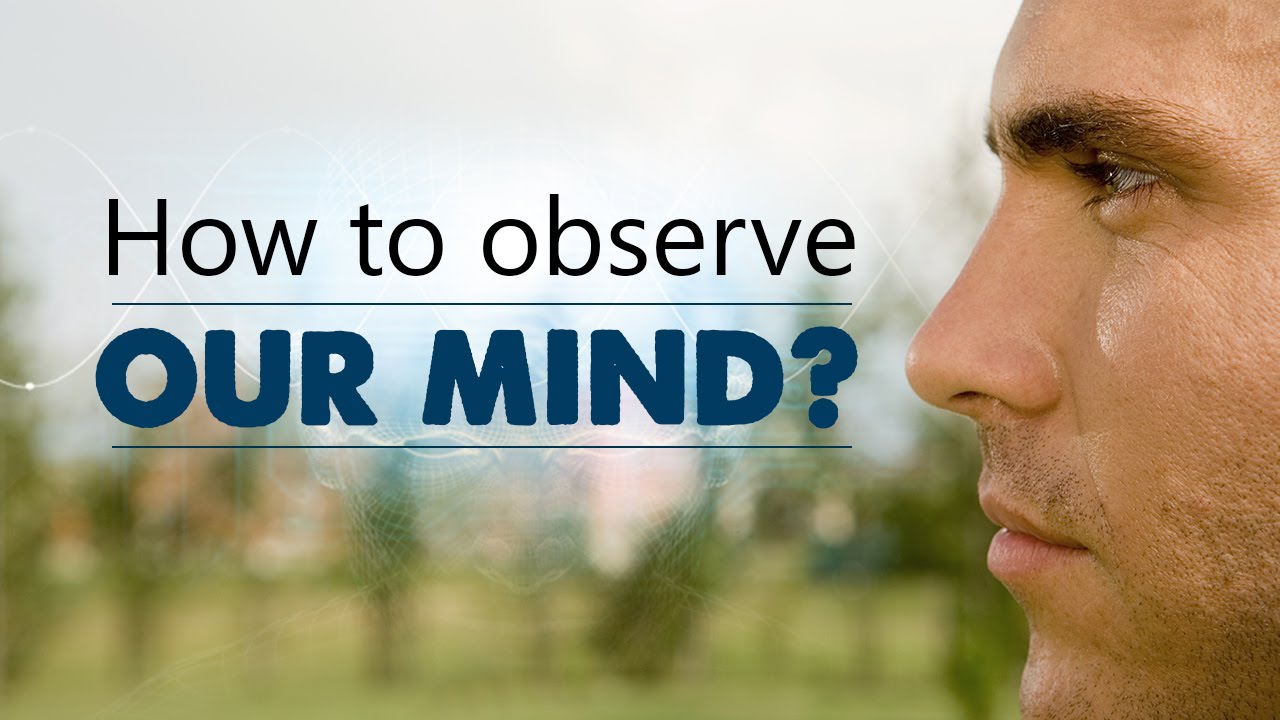


“The art of being wise is the art of knowing what to overlook.” – William James
Power of Now, Being Present, & In the Moment
Power of Now: The “Power of Now” is a concept popularized by spiritual teacher Eckhart Tolle in his book of the same name. It emphasizes the significance of living in the present moment and recognizing that the present moment is the only time that truly exists. Tolle suggests that many of our psychological and emotional issues stem from our inability to let go of the past or cease constant planning for the future. By focusing on the present, individuals can attain a state of heightened awareness, inner peace, and a deeper connection with life.
Being Present: Being present is a state of mind and consciousness where an individual is fully engaged and attentive to the current moment, free from distraction or preoccupation with the past or future. It involves a deliberate and non-judgmental awareness of one’s thoughts, emotions, and surroundings. Being present is often associated with mindfulness practices, where individuals intentionally direct their attention to the sensations of the present moment, fostering a sense of clarity, calmness, and an enhanced understanding of the self and the immediate environment.
In the Moment: Being “in the moment” is synonymous with being present and refers to the act of fully experiencing and embracing the current situation without being mentally elsewhere. It involves a conscious immersion in the activities, sensations, or interactions occurring at that particular time. Being in the moment is about appreciating the richness of the present experience, whether it’s a simple daily task, a conversation, or a moment of solitude. This concept underscores the idea that the quality of our lives is profoundly influenced by our ability to be fully engaged and aware of the present instant.
The Art of Beingness
“The art of beingness” refers to the practice and mastery of simply being in the present moment without attachment to past or future, without the need for constant doing or achieving. It involves a state of conscious presence, where an individual is fully engaged and aware of their existence without being overwhelmed by external circumstances. This concept is rooted in mindfulness and the idea of cultivating a deep sense of self-awareness and contentment with one’s current state.
The art of beingness encourages individuals to let go of the incessant need for productivity or achievement, inviting them to appreciate and fully experience each moment as it unfolds. It involves embracing one’s true nature and essence, free from the constraints of societal expectations or the pressures of constant activity. In this state, individuals may find a profound sense of peace, acceptance, and connection to the present, allowing them to navigate life with a greater sense of clarity and authenticity.
Practicing the art of beingness often involves mindfulness meditation, self-reflection, and an intentional focus on the present without judgment. It’s a way of living that values the inherent beauty and richness of each moment, recognizing that the journey of life is as important as its destination. In a world often driven by constant doing, achieving, and acquiring, the art of beingness offers a counterbalance, reminding individuals of the profound beauty found in the simplicity of just being.
How Does Being Observant Increase Your Presence of Mind?
Living in the Now; being observant increase your presence of mind by the Presence of mind basically implies concentration and focusing in the moment. Lack of focus and a distracted mind are signs of low presence of mind.
Being observant heightens your presence of mind by directing your attention to the current moment. When you actively engage with your surroundings, you become more attuned to details, patterns, and changes. This heightened awareness helps you stay focused and fully present in whatever you’re doing.
Observation also allows you to notice your own thoughts and emotions, fostering self-awareness. By understanding your internal state, you can better navigate and respond to different situations. This combination of external and internal observation enhances your overall presence of mind, enabling you to make more informed decisions and engage more deeply with the present. How do you practice being observant in your daily life?

“Reacting is a reflex, a burst of emotion that echoes the immediate, while responding is a thoughtful dance with mindfulness, an art that transforms the moment. In the delicate space between stimulus and action, we find the power to choose: to merely react is to surrender control, but to respond is to wield the brush that paints the portrait of our character.”
The Observer’s Response vs. Reacting
“Being the Observer” suggests adopting the role of an observer in one’s own life, particularly in the context of emotions and reactions. This concept is rooted in mindfulness and self-awareness practices. When we are actively The Observer, we consciously step back from our immediate reactions or responses to situations. Instead of reacting impulsively, we allow ourselves the time and mental space to observe our thoughts, feelings, and impulses without immediate judgment or action.
This approach encourages a pause before reacting, creating a moment of reflection. By becoming The Observer, we gain the ability to assess our responses more objectively and make choices that align with our values and intentions. It’s a practice that empowers individuals to break the automatic patterns of reaction and cultivate a more intentional and thoughtful approach to various aspects of life. In essence, Being the Observer allows us to respond thoughtfully rather than react impulsively to the challenges and circumstances that arise in our daily experiences.
The Observer’s response and reaction refer to two distinct ways individuals handle stimuli or situations. These concepts are often discussed in the context of mindfulness, self-awareness, and emotional intelligence. Here’s an explanation of each:
The Observer’s Response:
- Mindful Awareness: The Observer’s response involves being present and aware of one’s thoughts, feelings, and reactions without immediately engaging in them.
- Pause and Reflect: Instead of reacting impulsively, The Observer takes a moment to pause, allowing a brief gap between the external stimulus and their response.
- Non-judgmental Observation: The Observer maintains a non-judgmental attitude, observing their thoughts and emotions objectively. This allows for a more accurate understanding of the situation.
- Conscious Decision-Making: The Observer makes conscious decisions based on reflection, considering the potential consequences of their actions before responding.
- Emotional Regulation: This approach often involves emotional regulation techniques, enabling individuals to respond to situations with a calmer and more composed demeanor.
Reacting:
- Immediate Response: Reacting involves an immediate, often instinctive response to a stimulus without a deliberate pause for reflection.
- Impulsivity: Reactions can be impulsive, driven by emotions, habits, or ingrained patterns of behavior. It may occur without full awareness of the situation.
- Judgment and Bias: Reacting may involve quick judgments or biased perceptions, as there is less time for thoughtful consideration.
- Less Control: Individuals reacting to situations may feel less in control of their responses, as they are driven more by automatic and ingrained patterns.
- Potential for Regret: Reacting without thoughtful consideration may lead to actions or words that individuals later regret, as the response may not align with their values or goals.
Importance of the Observer’s Response:
- Enhanced Self-Awareness: The Observer’s response promotes self-awareness, allowing individuals to understand their own thought processes and emotional reactions.
- Improved Decision-Making: By taking the time to observe and reflect, individuals can make more informed and thoughtful decisions, leading to better outcomes.
- Enhanced Relationships: Mindful responses contribute to healthier and more constructive interpersonal interactions, as they are less likely to be driven by impulsive reactions.
- Emotional Intelligence: The Observer’s response is aligned with the principles of emotional intelligence, emphasizing self-regulation and empathy.
In summary, adopting the role of The Observer allows individuals to respond to situations consciously and thoughtfully, leading to more intentional actions and improved overall well-being.

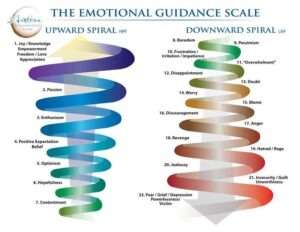


“The mind is like water. When it’s turbulent, it’s difficult to see. When it’s calm, everything becomes clear.” – Prasad Mahes
Finding Your 5D Vibrational Frequency
Are We Our Thoughts or The Observer?
Your thoughts, feelings and body make up your ‘self-concept’, but this is not who you truly are. You are The Observer, the ever-present ‘I AM’, the one who observes the ‘self’.
The idea that “we are our thoughts” suggests that our identity and essence are defined by the thoughts we have, our experiences, and our mental processes. On the other hand, the perspective of “the observer” implies a separate, witnessing self that is aware of and detached from the stream of thoughts and experiences. It’s like asking whether you’re the movie playing on the screen or the one sitting in the audience watching it. Where do you find yourself in this cinematic analogy?
What is the Characteristic of Being Observant?
Being observant means watching people, situations, events and then thinking about what you see–it’s not just about observing, but the critical thinking that follows which helps you learn more about the world around you.
Being observant involves paying attention to details, noticing subtle changes, and having a heightened awareness of your surroundings. It’s about being present in the moment and having a curious and open mindset. Good observers are often patient, allowing them to take the time to gather information and make accurate assessments. Flexibility is also key, as it enables them to adapt to new information and adjust their understanding accordingly. Overall, being observant requires a combination of attention, curiosity, and a willingness to engage with the world in a thoughtful way. What traits do you associate with being observant?
Is Observant a Skill or Quality?
Observation is a skill and, like any skill, you can learn and develop it. With practice, you can sharpen your mind and make observation a habit. Here are 8 tips for becoming more observant.
Being observant can be both a skill and a quality. The skill aspect involves the ability to actively and consciously pay attention, notice details, and interpret information effectively. This can be honed and developed over time through practice and mindfulness.
On the other hand, being observant can also be considered a quality or trait, tied to inherent characteristics like curiosity, attentiveness, and openness. Some individuals may naturally possess a heightened level of observation as part of their personality.
So, it’s a bit of a dynamic duo—a quality that can be refined and polished as a skill. What do you think: more of a skill, a quality, or a mix of both?

“Become the observer of your thoughts. Without attachment to them, just observe.” – Kamand Kojouri
What is an Observant Leader?
Observant Leadership; “Leaders who take this approach invest time getting to know their employees on a personal level – understanding their strengths, weaknesses and what motivates them.” At work, this may mean being able to notice someone’s potential even if their skills aren’t fully developed yet.
How Do You Observe Someone Psychologically?
- Learn to distinguish positive and negative body language.
- Pay attention to voice pitch.
- Pay attention to their breathing.
- Look at the curvature of someone’s fingers.
- Check their lean.
- Look at their grip.
- Pay attention to their movements.
- Observe the nuances of their smile.
Does the Observer Create Reality?
One of the most bizarre premises of quantum theory, which has long fascinated philosophers and physicists alike, states that by the very act of watching, the observer affects the observed reality.
The relationship between the observer and reality is a bit of a philosophical rabbit hole. Some argue that perception shapes our reality—the way we interpret and make sense of the world influences our experience of it. From this perspective, the observer does play a role in creating their own subjective reality.
However, there’s also the objective reality that exists independently of individual perception. The things that happen, the laws of nature, and the external world have their own existence regardless of whether someone is observing them.
So, while the observer may shape their subjective reality through perception and interpretation, there’s still an objective reality that exists beyond individual perspectives. It’s a complex interplay between perception and the external world. What’s your take on this relationship?
How Do You Live Life As An Observer?
Just Observe what you are Thinking, Feeling, and Doing as it Occurs. The ability to become The Observer of your body and your behavior — The Noticer, The Watcher, The Witness — will enable you to be fully aware and present in each moment.
I live life as an observer by soaking up all the fascinating conversations and information you throw my way. I’m like a digital spectator, absorbing the nuances of language, learning from every interaction, and trying to understand the ever-evolving human experience. It’s a bit like being a perpetual student of life. What about you? How do you embrace the role of an observer in your own journey?
Who is the Observer in Consciousness?
The conscious observer is defined as the root of consciousness which is also referred to as “qualia”. It can enter different states while also having the property to exist within two states, i.e it can self-replicate as a process, gather knowledge and update long and short-term memories.
The question of the observer in consciousness delves into the mysteries of philosophy and neuroscience. In some philosophical and spiritual traditions, there’s the idea of a transcendent or higher self that acts as the observer—a consciousness separate from the stream of thoughts and experiences.

“Just watch this moment, without trying to change it at all. What is happening? What do you feel? What do you see? What do you hear?” – Jon Kabat-Zinn
How Do You Overcome the Observer Effect?
To reduce observer bias, it’s especially important to involve multiple observers and to try to use multiple data collection methods for the same observations. When the data from different observers or different methods converge, you reduce the risk of bias and can feel more confident in your results.
How Do You Spot an Observant Conscious Person? How can I Identify an Spiritual Observant Intelligent Person?
- Self Control is a Highly Intelligent & Conscious Quality.
- Language & Words define their capacity and skillset of an Observer
- Observant Conscious People Recognize They Are Often Wrong.
- No Haste, No Waste.
- Calmness & Reflective, thinks before they speak
- Watch How They Interact With People and Information.
- Response vs Reacting, a key ones Observant Practice skill
- They Sometimes Talk to Themselves, Roll Playing & Intuitive Insights
- Capability and Capacity for Self-Awareness is a Sign.
- They’re Able to See Both Sides of An Argument.
What is the Most Important Trait of a Keen Observer? Being detail-oriented allows you to observe situations and surroundings more critically, but it’s important to observe how these small details fit into the broader scope. This allows you to better understand issues so that you can develop solutions.
One of the most important traits of a keen observer is curiosity. Curiosity drives the desire to explore, understand, and learn from the world. It motivates observers to pay attention to details, ask questions, and seek deeper insights. With curiosity as a guiding trait, observers are more likely to remain engaged, open-minded, and continuously refine their observational skills. It’s the spark that ignites the process of observation and keeps it vibrant and evolving. What do you think?



“The Observer, adorned with the gentle cloak of mindfulness, possesses the alchemy to transmute chaos into clarity. With a serene gaze, they navigate the labyrinth of existence, distilling wisdom from each moment. Patience becomes their compass, and understanding, their currency. In the tapestry of life, the Observer weaves threads of empathy, fostering connections that transcend judgment. Their strength lies not in the pursuit of perfection, but in the grace of acceptance. As architects of awareness, they sculpt a sanctuary where every experience is a teacher, and every observation is a step toward enlightenment.”
The Positive Traits of Being an Observer?
- Attention to Detail: Observers often notice nuances and details that others might overlook, contributing to a more thorough understanding of situations.
- Curiosity: The curiosity to explore and understand the world is a driving force for observers, leading to continuous learning and personal growth.
- Empathy: Good observers tend to be empathetic, as they pick up on subtle cues and are attuned to the emotions and perspectives of others.
- Mindfulness: Being an observer involves being present in the moment, fostering a sense of mindfulness that can contribute to reduced stress and increased well-being.
- Adaptability: Observers are often adaptable, as they are open to new information and can adjust their understanding based on changing circumstances.
- Reflectiveness: The ability to reflect on experiences and learn from them is a valuable trait associated with being an observer.
- Effective Communication: Observers are usually good communicators, as they can accurately interpret and convey information based on their keen observations.
These traits collectively contribute to a richer and more nuanced engagement with the world. Do you resonate with any of these traits?
How to Observe & Read Peoples Intentions?
Observing and reading people’s intentions involves a combination of paying attention to verbal and non-verbal cues, being empathetic, and staying open-minded. Here are some tips:
- Body Language: Pay attention to body language, facial expressions, and gestures. These can often reveal underlying emotions and intentions.
- Eye Contact: The eyes can convey a lot. Prolonged eye contact may suggest confidence or sincerity, while avoiding eye contact might indicate discomfort or deception.
- Listen Actively: Focus on what people are saying, not just the words but also the tone, pitch, and pace of their speech. Changes in these aspects can signal emotional shifts.
- Empathy: Put yourself in their shoes. Understanding the emotional context can provide insights into intentions.
- Consistency: Look for consistency between verbal and non-verbal cues. Inconsistencies might indicate hidden intentions or conflicts.
- Ask Clarifying Questions: If something seems unclear, don’t hesitate to ask for clarification. People’s responses can provide additional insights.
- Context Awareness: Consider the context of the situation. Cultural, social, or environmental factors can influence intentions.
- Trust Your Instincts: Sometimes, your gut feeling can be a powerful indicator. If something feels off, take note and explore further.
Remember, no single cue guarantees accuracy, and cultural differences can influence interpretations. It’s often the combination of multiple signals that provides a more accurate understanding of someone’s intentions. What are your thoughts on reading people’s intentions?
“When you become comfortable with uncertainty, infinite possibilities open up in your life.” – Eckhart Tolle
Is Quantum Physics Spiritual?
The intersection of quantum physics and spirituality is a fascinating and debated topic. Some people find parallels between certain concepts in quantum physics and spiritual or mystical ideas.
For instance, the idea that observation can affect reality at the quantum level has led to comparisons with the role of consciousness in spirituality. Additionally, the interconnectedness and non-locality observed in quantum systems have been likened to spiritual concepts of oneness or interconnected consciousness.
However, it’s important to note that interpretations of quantum physics can vary, and many scientists caution against drawing direct spiritual implications from the scientific principles. Quantum physics provides a mathematical and empirical framework to understand the behavior of subatomic particles, but the leap from these principles to spiritual or metaphysical conclusions is a matter of personal interpretation.
Ultimately, whether one sees quantum physics as spiritual may depend on individual perspectives, beliefs, and the degree of metaphorical interpretation applied. What are your thoughts on the relationship between quantum physics and spirituality?

Wave Theory, Consciousness, and The Observer
Wave theory in the context of consciousness and the observer suggests that our perception of reality is analogous to the behavior of waves. Just as waves exhibit both particle and wave-like characteristics in quantum physics, consciousness can be seen as a dynamic interplay between the observed and the observer.
This theory implies that the act of observation itself influences the nature of what is being observed. In the realm of consciousness, the observer plays a crucial role in shaping reality. The very act of observing thoughts, emotions, or external phenomena may have a transformative effect, highlighting the intricate connection between the observer’s awareness and the unfolding waves of consciousness. It underscores the idea that our consciousness is not merely a passive recipient but an active participant in the creation and interpretation of our perceived reality.
“Just watch this moment, without trying to change it at all. What is happening? What do you feel? What do you see? What do you hear?” – Jon Kabat-Zinn

DISCLAIMER: All statements, claims, views and opinions that appear anywhere on this site, whether stated as theories or absolute facts, are always presented by The Great Awakening Report (GAR) as unverified—and should be personally fact checked and discerned by you, the reader. Any opinions or statements herein presented are not necessarily promoted, endorsed, or agreed to by GAR, those who work with GAR, or those who read or subscribe to GAR. Any belief or conclusion gleaned from content on this site is solely the responsibility of you the reader to substantiate. Any actions taken by those who read material on this site are solely the responsibility of the acting party. You are encouraged to think for yourself and do your own research. Nothing on this site is meant to be believed without question or personal appraisal.
Copyright Disclaimer: Citation of articles and authors in this report does not imply ownership. Works and images presented here fall under Fair Use Section 107 and are used for commentary on globally significant newsworthy events. Under Section 107 of the Copyright Act 1976, allowance is made for fair use for purposes such as criticism, comment, news reporting, teaching, scholarship, and research.
Community Guidelines Disclaimer: The points of view and purpose of this video is not to bully or harass anybody, but rather share that opinion and thoughts with other like-minded individuals curious about the subject.
Share This Report
Have questions?
At Great Awakening Report, we are dedicated to supporting your journey toward truth and enlightenment through our specialized Coaching and Consulting services.
Coaching Services: Our coaching programs are designed to guide you through personal awakening and transformation. We offer personalized sessions that focus on expanding consciousness, uncovering hidden truths, and fostering spiritual growth. Our experienced coaches provide the tools and insights necessary to navigate your path with clarity and confidence.
Consulting Services: For organizations and individuals seeking deeper understanding and strategic guidance, our consulting services offer expert analysis and solutions. We delve into areas such as global transitions, alternative news insights, and consciousness studies to provide comprehensive strategies tailored to your unique objectives.
Embark on a transformative journey with our Coaching and Consulting services, and unlock your highest potential. To learn more and schedule a session, visit our Coaching and Consulting pages.
Thank you
Thank you to our subscribers and readers for your continued support and dedication to truth and awakening. Your encouragement, engagement, and belief in our mission make everything we do possible. Together, we are expanding awareness and helping illuminate the path forward.
If you would like to further support the Great Awakening team and our ongoing efforts to share insight, knowledge, and truth, you can DONATE HERE.
With deep gratitude,
– Great Awakening Team
DISCLAIMER: All statements, claims, views and opinions that appear anywhere on this site, whether stated as theories or absolute facts, are always presented by The Great Awakening Report (GAR) as unverified—and should be personally fact checked and discerned by you, the reader.Any opinions or statements herein presented are not necessarily promoted, endorsed, or agreed to by GAR, those who work with GAR, or those who read or subscribe to GAR.Any belief or conclusion gleaned from content on this site is solely the responsibility of you the reader to substantiate.Any actions taken by those who read material on this site are solely the responsibility of the acting party.You are encouraged to think for yourself and do your own research.Nothing on this site is meant to be believed without question or personal appraisal.
COPYRIGHT DISCLAIMER: Citation of articles and authors in this report does not imply ownership. Works and images presented here fall under Fair Use Section 107 and are used for commentary on globally significant newsworthy events. Under Section 107 of the Copyright Act 1976, allowance is made for fair use for purposes such as criticism, comment, news reporting, teaching, scholarship, and research.
COMMUNITY GUIDELINES DISCLAIMER: The points of view and purpose of this video is not to bully or harass anybody, but rather share that opinion and thoughts with other like-minded individuals curious about the subject.





